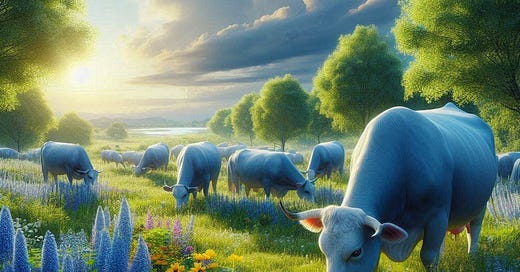My first post on this great but woefully-neglected novel gave an overview of the story. Here I look at its treatment of the realm of Faery, or Faërie.
My own view of that realm draws very much on Tolkien’s, as previously discussed. Tolkien said he would “not attempt to define” the land’s nature, “nor to describe it directly. It cannot be done. Faërie cannot be caught in a net of words; for it is one of its qualities to be indescribable, though not imperceptible”; “its very richness and strangeness tie the tongue of a traveller who would report them.” Created through artistry and hard work, it stands on its own as “a Secondary World”, its text never referring back explicitly to its author, or its own created nature. But, unlike the “world building” of modern fantasy and science fantasy trilogies, Faery is elusive and Other, shying away from scrutiny, shading off into the unknown and never-to-be-known. Above all, Faery stirs us to wonder, yearning and dread.
How closely does Lud-in-the-Mist follow this path?
Dorimare’s inhabitants had a range of beliefs about fairies and Fairyland. Its flowers were red, its cattle blue. Fairy gold turned into dung when it crossed the border. Envious of mortals’ substance, fairies visited Dorimare invisibly to suck the goodness out of folk’s food and drink. They stole children, “to tend their blue kine and reap their fields of gillyflowers”. As well, commoners believed a fairy might impersonate a mortal; if disguised among one’s servants, “he was bound to return to his own land on one of the twelve nights after the winter solstice”.
However, the most common reference to fairy things is not to fairies themselves, or their land, but to fairy fruit, due its hallucinogenic, addictive and illegal nature.
The dead
There is some confusion between fairies and the human dead. Are they the same? Common folk, we’re told, refer to both as the Silent People. The human dead do go to Faery, following the path of the Milky Way; should they return they are unable speak except in riddle and rhymes or broken syllables; we meet one of them, who does behave this way. On the other hand, we also meet someone who is almost certainly a fairy: Willy/Professor Wisp, and he is articulate. So the dead and fairies differ. Yet when a “fairy army” marches into Dorimare it is composed entirely of the human dead. If there is a meaning in this confusion, I didn’t find it. There is a small hint that Wisp is the Duke in disguise, but it felt more as if the author simply wasn’t bothered by this inconsistency in the story.
To me the most moving evocation of Faery comes in a song, appearing almost twenty times in the text; the story ends with it. It’s not the author’s creation but a traditional piece from the early 1600s, titled Robin Goodfellow (the fairy later made famous by Shakespeare). But Mirrlees varies some lines of the traditional song, making it soothing or frightening by turns. There are windfalls of dreams, there’s a wolf in the stars, Nathaniel hears on the frontiers of Faery, And Life is a nymph who will never be thine. It “was danced in the moonlight,” Wisp cried, “when Lud-in-the-Mist was nothing but a beech wood between two rivers. It is the dance that the Silent People dance along the Milky Way. It’s the dance of laughter and tears.”
Towards the end she allows her Secondary World to collapse, as her symbols become explicit. “There are many trees in my orchard,” Duke Aubrey tells Chanticleer, “and many and various are the fruit they bear—music and dreams and grief and, sometimes, joy. All your life, Chanticleer, you have eaten fairy fruit.” The author ends by telling us that “the Written Word is a Fairy, as mocking and elusive as Willy Wisp, speaking lying words to us in a feigned voice.” The Dorimare cemetery is called the Fields of Grammary.
Overall, then, I think Lud-in-the-Mist should be remembered not for its portrayal of Faery, but as a gift from a Modernist intellectual to the fantasy genre in a more general way. My final post on this book will consider it as a novel of ideas.




